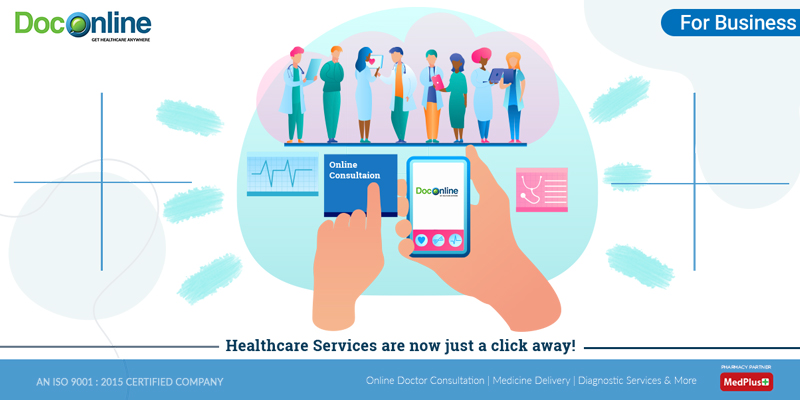A Comprehensive Overview to Subscription Based Healthcare: What You Need to Know
A Comprehensive Overview to Subscription Based Healthcare: What You Need to Know
Blog Article
The Surge of Subscription-Based Healthcare and Its Influence on Patient Care
As health care develops, the subscription-based version is getting traction, assuring to reinvent patient treatment by providing predictability and availability. The potential for these versions to reshape medical care shipment raises pressing inquiries concerning their lasting sustainability and inclusivity. Are these registration solutions the future of medical care, or do they take the chance of leaving at risk populations behind?
Recognizing Membership Medical Care Models
Comprehending the concept of subscription medical care models involves checking out a transformative method to clinical solutions that highlights cost and accessibility. These versions, usually referred to as straight health care (DPC) or concierge medicine, have become cutting-edge alternatives to conventional fee-for-service medical care systems. Subscription health care enables people to pay a fixed month-to-month or annual fee for a specified set of medical solutions, which might include unrestricted workplace gos to, regular exams, and basic lab tests, without the need for typical insurance coverage billing.
The framework of subscription health care designs is made to simplify individual treatment by eliminating third-party payers and complicated invoicing codes, consequently lowering administrative concerns. Doctor can focus more on patient care, fostering stronger patient-provider connections. This model also promotes preventative care by encouraging regular gos to, as the financial obstacle of per-visit charges is removed.
The subscription model often equips health care service providers to take care of smaller sized person panels, permitting even more tailored care. It aligns financial incentives with person wellness outcomes, as carriers are inspired to maintain client fulfillment and wellness. On the whole, recognizing registration health care designs needs identifying their prospective to improve exactly how care is supplied and accessed.
Benefits for Providers and clients

For service providers, subscription-based designs supply the possibility to strengthen patient-provider relationships. With a constant earnings stream, healthcare experts can devote more time to every individual, causing a much more extensive and customized care experience. This model also reduces dependence on high client volumes, alleviating burnout and boosting work fulfillment. Additionally, the focus on preventive treatment within membership plans can lead to far better person results and minimized lasting medical care expenses. By concentrating on continual care, providers can address concerns before they escalate, ultimately profiting the medical care system overall by decreasing the burden on emergency situation and acute care services.
Difficulties and Problems
While subscription-based medical care models present numerous benefits, they likewise include a collection of challenges and issues that have to be dealt with. Ease of access stays a substantial issue, as these designs usually target individuals who can manage month-to-month costs, possibly omitting low-income populaces. This elevates moral questions about equitable access to medical care services. Furthermore, the diverse nature of membership strategies can lead to complication among clients relating to insurance coverage specifics, possibly leading to unmet assumptions or insufficient care.
Financial sustainability of subscription-based models is an additional problem. Service providers should balance the fixed revenue from registrations with the variable prices of medical care solutions, which may fluctuate as a result of unpredicted medical needs. This can create stress to limit services or boost charges, potentially influencing person satisfaction and care top quality.
Moreover, regulatory oversight of subscription-based healthcare models is still progressing. The absence of standard frameworks can lead to irregular service top quality and liability, complicating initiatives to guarantee client defense. Lastly, the assimilation of technology-- frequently a keystone of these models-- questions about data personal privacy and protection, as sensitive individual information might be vulnerable published here to violations. Addressing these obstacles is vital for the effective and equitable application of subscription-based health care.
Influence On Patient-Doctor Relationships
One considerable effect of subscription-based medical care models on patient-doctor partnerships is the potential for enhanced continuity and personalized care. By taking on a registration version, physicians can handle a smaller client panel, permitting even more committed time with each person. This raised schedule cultivates a much deeper understanding of a client's case history, lifestyle, and preferences, allowing much more tailored therapy strategies and treatments.

Nevertheless, it is essential to identify that while subscription-based designs may profit those who can afford them, they can unintentionally broaden health care disparities. People that are incapable to take part in these models may experience lower access to personalized treatment, potentially impacting their connections with healthcare carriers. Hence, while the subscription design offers encouraging advantages for patient-doctor partnerships, it also poses obstacles that need to be resolved to ensure equitable medical care access.
Future of Medical Care Access

The role of innovation can not be ignored Discover More in this improvement. Telemedicine systems and electronic health records facilitate seamless communication between clients and doctor, damaging down logistical and geographical obstacles. Additionally, innovations in expert system and data analytics can even more individualize treatment by anticipating patient needs and maximizing therapy strategies.
Nonetheless, the future of medical care gain access to additionally presents challenges, such as guaranteeing equity across different socio-economic groups. Policymakers and doctor have to work together to bridge the digital divide, making sure that subscription-based designs remain inclusive and budget friendly. As these systems develop, they hold the promise of making healthcare extra obtainable, reliable, and patient-centric.
Final Thought
Subscription-based healthcare versions are reshaping person care by offering a secure cost structure and improving accessibility. The rise of subscription-based health care motivates proactive patient interaction, which has the prospective to enhance client results and contentment, signifying a transformative change in health care shipment.
As health care develops, the subscription-based model is getting grip, guaranteeing to reinvent individual care by offering predictability and accessibility.Subscription-based medical care models use unique advantages for both carriers and individuals, improving the overall health care experience.As healthcare systems evolve, the future of medical care access frequently pivots on the combination of innovative versions and technologies.Subscription-based medical care versions are reshaping patient treatment by providing a secure price framework and boosting availability. The increase of subscription-based health care encourages positive patient engagement, which has the potential to enhance patient results and contentment, signifying a transformative shift in health you can try here care delivery.
Report this page